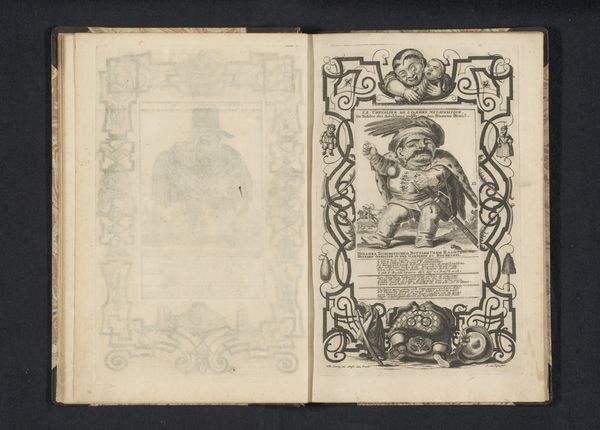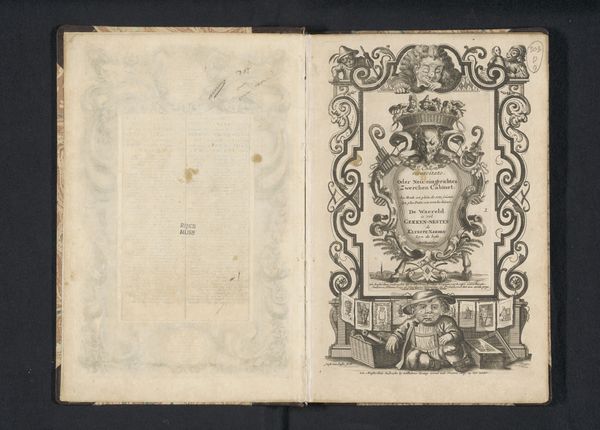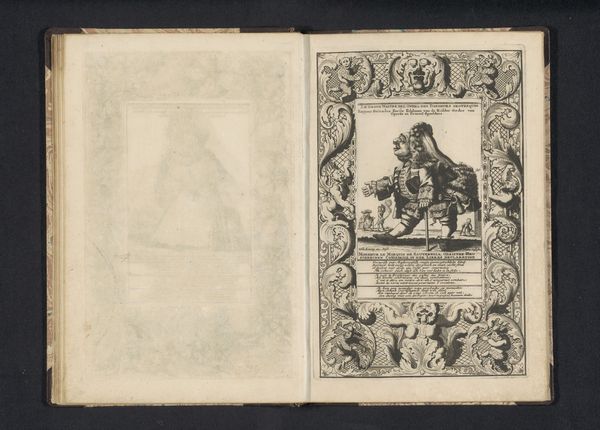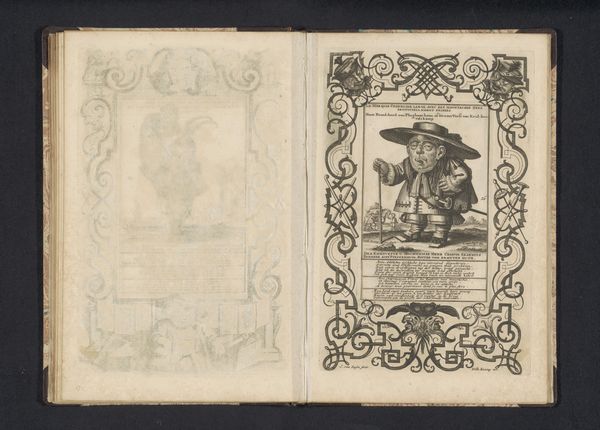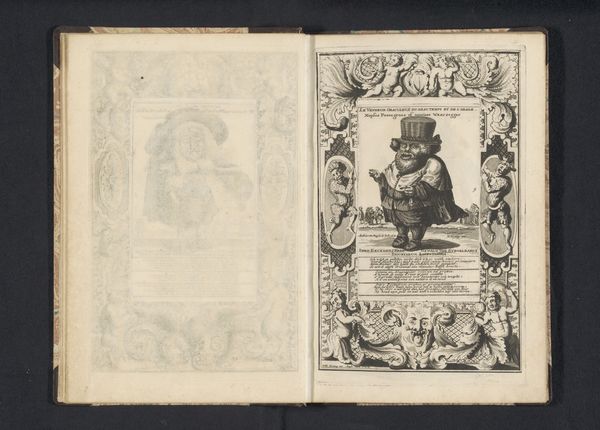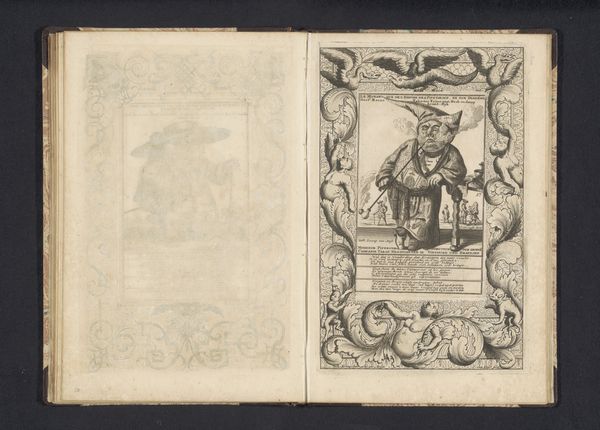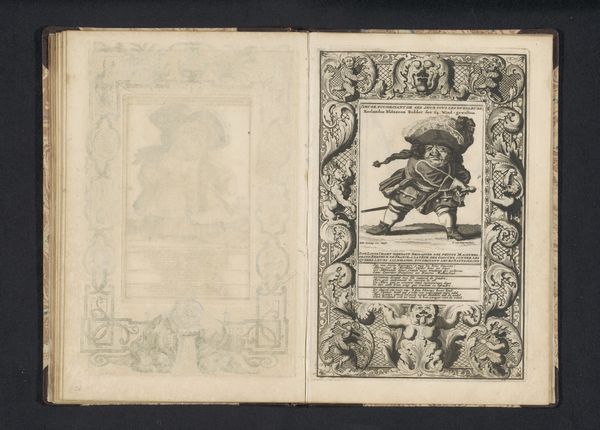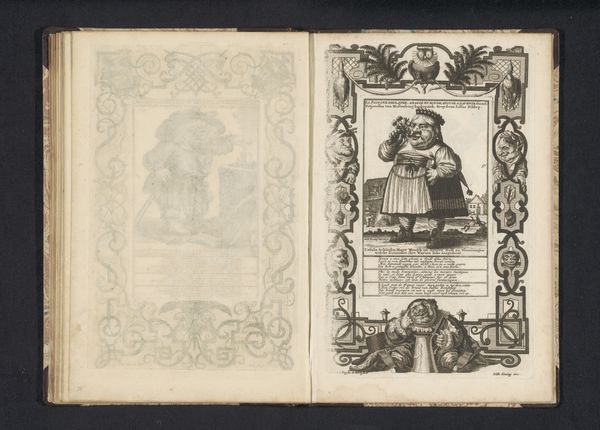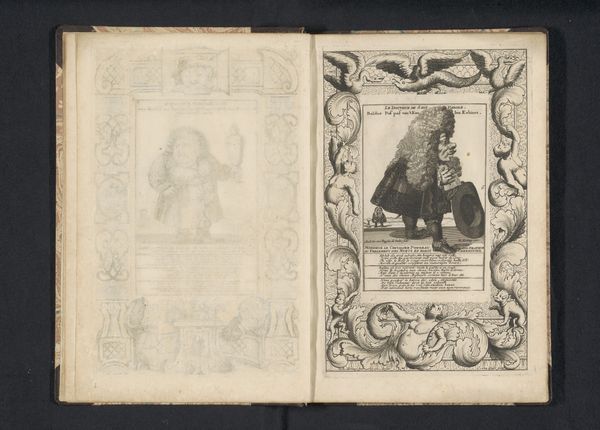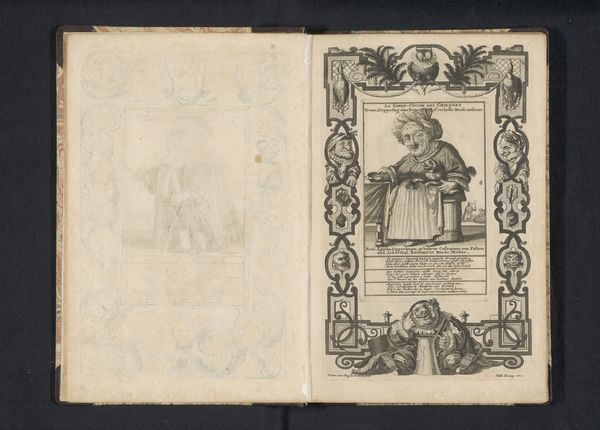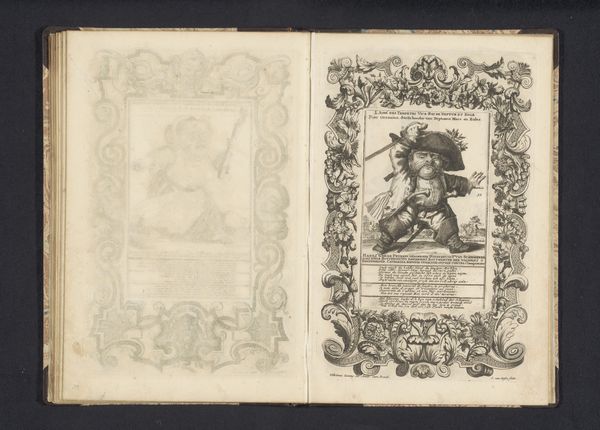
lithograph, print, etching, engraving
#
portrait
#
baroque
#
lithograph
# print
#
etching
#
figuration
#
coloured pencil
#
engraving
Dimensions: height 160 mm, width 105 mm, height 275 mm, width 172 mm
Copyright: Rijks Museum: Open Domain
Curator: What a curious print! This is "De dwerg Cornutus Foxhornius als hoorndrager, 1716" by Joost van Sassen, executed using etching, engraving, and lithography techniques. Editor: My first thought is that it feels like a piece of satire. The exaggerated features and the subject's overall presentation have this wonderfully strange and grotesque quality to it. Curator: Absolutely. Notice how the central figure, presumably Cornutus Foxhornius, is presented within this very elaborate, almost theatrical frame. The frame is adorned with grotesque masks and intricate scrolling patterns. The formal structure reinforces the spectacle of the subject. Editor: The figure carries an enormous pair of horns, reminiscent of the traditional symbol of cuckoldry. Is it meant to be mocking someone specifically, or is it a more generalized commentary? What could horns have represented for viewers at the time? Curator: Precisely! And that inscription at the bottom… We see several smaller images below that seem to mimic portraits. It creates a multi-layered experience where you examine each aspect while searching for any correlation within its layout. Editor: And the dwarf-like figure at the base, surrounded by images... It feels as though this individual is exhibiting, almost "selling," this rather cruel narrative. The whole thing smacks of judgment, really. It feels deeply ingrained in social ridicule, doesn’t it? Curator: Agreed, but it's interesting how the baroque elements create an elaborate interplay. These flourishes emphasize the artwork’s inherent tensions between humor and outright scorn, thus producing the effect you noticed initially. Editor: The artist masterfully employs the symbolic language and the structure, amplifying that satirical edge while tapping into shared cultural anxieties about status, fidelity and, perhaps, physical deformity. It is not a flattering portrayal, that’s for sure! Curator: Seeing how van Sassen organized each formal compositional detail encourages me to believe how the grotesque form has a beauty of its own—despite all social commentary it is trying to elicit! Editor: Ultimately, looking at "De dwerg Cornutus Foxhornius als hoorndrager, 1716" has highlighted to me the role of prints as vehicles for social commentary during the Baroque period, and more largely on, using symbolism as a powerful form of commentary.
Comments
No comments
Be the first to comment and join the conversation on the ultimate creative platform.
